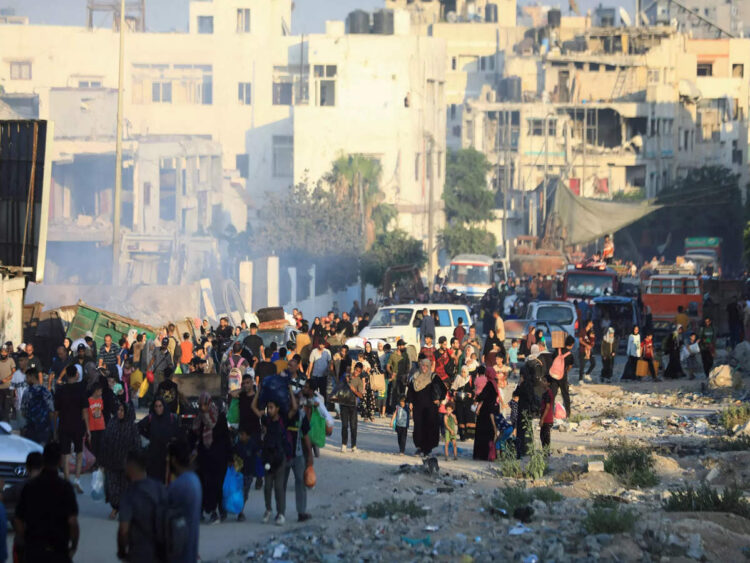On July 10, the Israeli Army dropped thousands of leaflets over Gaza City, urging residents to evacuate amid a heavy offensive that has severely impacted the main city of the besieged Palestinian territory. Addressed to “everyone in Gaza City,” the leaflets outlined designated escape routes and warned that the area, with a pre-war population exceeding half a million, would “remain a dangerous combat zone.”
Intensified Combat and Humanitarian Concerns
This warning came as Israeli troops, supported by tanks and aircraft, engaged in fierce battles with Hamas and Islamic Jihad militants. The United Nations expressed grave concern, stating that the evacuations “will only fuel mass suffering for Palestinian families, many of whom have been displaced multiple times.” UN Secretary-General Antonio Guterres’s spokesman, Stephane Dujarric, emphasized, “The civilians must be protected.”
An Israeli government spokesperson explained that the aim was “to put civilians out of harm’s way” as the military confronts militants. One resident, Umm Nimr al-Jamal, lamented, “This is the 12th time my family has had to flee. How many times can we endure this?”
Truce Talks and Continued Conflict
The escalation in fighting and displacement coincided with resumed truce and hostage release talks in Qatar. Hamas official Hossam Badran suggested that Israel’s intensified military operations aimed to pressure the resistance into relinquishing its demands but insisted that “the continuation of massacres compels us to adhere to our demands.”
In Gaza’s far-southern Rafah, witnesses reported intense fire from Israeli tanks that had entered the city center. Deadly strikes also hit four schools used as shelters in four days, killing at least 49 people. Both France and Germany condemned these attacks as “unacceptable,” with the French foreign ministry calling for investigations into the strikes, particularly one near Khan Yunis.
International Responses and Truce Negotiations
Israel defended the strikes, claiming they targeted militants hiding in schools. In Gaza City’s Shujaiya district, where major battles had raged since an Israeli evacuation order on June 27, civil defense spokesperson Mahmud Bassal described widespread “destruction,” though witnesses noted that Israeli troops had withdrawn from the area.
An Israeli delegation led by spy chief David Barnea arrived in Doha for truce talks, joined by CIA director William Burns after discussions in Cairo. Israeli Prime Minister Benjamin Netanyahu met with US envoy Brett McGurk, emphasizing his commitment to a truce plan that preserves Israel’s security interests.
Ongoing War and Humanitarian Crisis
The conflict, which began with Hamas’s October 7 attack on southern Israel, has resulted in the deaths of 1,195 people in Israel, mostly civilians, and the seizure of 251 hostages by militants. Israel’s military response has killed at least 38,295 people in Gaza, mostly civilians, according to local health authorities. Israeli Defence Minister Yoav Gallant reported significant losses for Hamas fighters.
Israel’s siege on Gaza, easing only sporadically for aid deliveries, has led to critical shortages of medical supplies. Independent UN rights experts accused Israel of a “targeted starvation campaign,” a claim Israel strongly rejected.
Meanwhile, relatives of Israeli hostages marched from Tel Aviv to Jerusalem, demanding swift action from Netanyahu. Ayala Metzger, daughter-in-law of a hostage who died in captivity, called for nationwide support to “remind Netanyahu that he needs to sign a deal to bring them back and stop this terrible war.”
Cross-border clashes between Israeli forces and Hezbollah militants in Lebanon have intensified, raising fears of a broader regional conflict. Hezbollah leader Hassan Nasrallah indicated that his group would cease fire if the fighting in Gaza ends, stating, “If a ceasefire is reached, and we all hope for that… our front will cease fire without any discussion.”

















Comments